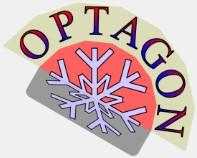OPTAGON project
OPTAGON project
This project has received funding from the European Union’s Horizon 2020 research and innovation programme under grant agreement No. 964698.
Meeting heating and cooling needs in residential buildings and industrial applications results in a significant contribution to greenhouse gas emissions. Current approaches include conventional mechanical compressor-heat pump technologies with liquid or gas refrigerants and newer solid-state semiconductor-based thermoelectric ones. The latter are quieter and have no moving parts but are generally applicable only to small-scale applications.
The EU-funded OPTAGON project explores a revolutionary optical approach to refrigeration based on solar cell materials and LEDs. It will harness the ability of LEDs to cool themselves in the process of emitting photons known as electroluminescent cooling, ideally providing access to cooling performance enabling even cryogenic applications.
According to fundamental thermodynamics, using light as a refrigerant could allow new cooling technologies providing a much better alternative for the presently prevailing mechanical compressor based heat pumps and their all-solid-state thermoelectric counterparts. Recent evidence shows that such a break-through is already possible with the right combination of the latest innovations in lighting, photovoltaics and nanotechnologies.
Addressing the challenges of stopping the use of polluting green-house gasses and reducing the rapidly increasing global energy consumption on cooling and heating, OPTAGON aims to demonstrate and harness the fundamental phenomenon of electroluminescent cooling to develop the first thermophotonic coolers. This opens an entirely new way to tackle the challenges of efficient solid-state cooling, enabling cooling solutions all the way from cryogenic coolers to domestic heat pumps.
In a multidisciplinary cross-over approach we combine thin-film solar cell materials and light emitting diode structures with recently developed extremely efficient light extraction methods and emerging nanoengineering concepts using optical near-field effects to demonstrate the extraordinary prospects of thermophotonics. This creates a fundamental and cutting-edge line of research, development, and innovation targeting a solid-state cooling revolution with a scientific underpinning and addressing the urgent industrial needs for efficient cryogenic solid -state cooling.
This project will combine synergies in theory, experiment and technology-development covering different fields from materials to photonics. The project partners, who are leaders in their respective fields, form a consortium that is uniquely positioned to achieve the ambitious objectives.
Partners
- AALTO KORKEAKOULUSAATIO SR
- STICHTING RADBOUD UNIVERSITEIT
- CENTRE NATIONAL DE LA RECHERCHE SCIENTIFIQUE CNRS
- INSTITUT NATIONAL DES SCIENCES APPLIQUEES DE LYON
- TEKNOLOGIAN TUTKIMUSKESKUS VTT OY
- TF2 DEVICES B.V.
Start date: 1 September 2021 - End date: 31 August 2025
